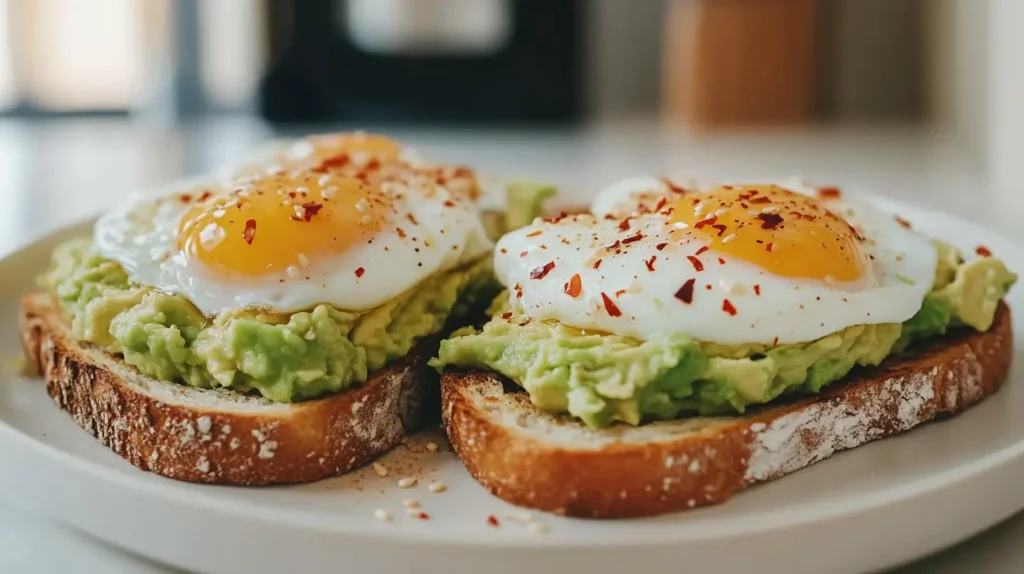Hey there, bread lovers! Have you ever found yourself craving delicious Bread but worried about carbs? You’re not alone! Low-carb bread has become a popular choice for those who enjoy their favorite foods without the guilt. Low-carb bread can be a game-changer if you’re on a keto diet, trying to lose weight, or just want to eat healthier. In this guide, we’ll explore everything you need to know about low-carb Bread, from what it is to how to make it, and even some tasty recipes. So grab a snack, and let’s dive in!
What is Low Carb Bread?
Low-carb bread is precisely what it sounds like: it contains fewer carbohydrates than traditional Bread. But what does that really mean? Typically, traditional Bread is made from wheat flour packed with carbohydrates. Conversely, low-carb Bread often uses alternative flour like almond or coconut flour, which is lower in carbs and higher in healthy fats. This makes it an excellent option for those who want to prepare Bread without carb overload.
The Benefits of Low-Carb Bread
You might wonder, “What’s so great about low-carb bread?” Well, let’s break it down!
- Weight Management: Low-carb bread can help you feel fuller for longer, so you might eat less overall. This can be helpful if you’re trying to shed a few pounds.
- Blood Sugar Control: Low-carb bread can help stabilize blood sugar levels for those with diabetes or insulin sensitivity. Fewer carbs mean less sugar in the bloodstream!
- Nutrient Density: Many low-carb breads are made with nutrient-rich ingredients. This means you’re not just cutting carbs but also adding some vitamins and minerals.
Nutritional Comparison: Low Carb vs. Regular Bread
Let’s quickly examine how loBreadb Bread stacks up against rBreadr bread. Here’s a simple table to illustrate the differences:
| Nutritional Facts | RBreadr Bread (1 slice) | Low Carb Bread (1 slice) |
|---|---|---|
| Calories | 70 | 50 |
| Carbohydrates (g) | 15 | 5 |
| Fiber (g) | 1 | 3 |
| Protein (g) | 2 | 4 |
| Fat (g) | 1 | 3 |
As you can see, loBreadbread offers a great alternative. It has fewer carbs and more fiber, making it a smart choice for many people.
Types of Low-Carb Bread
Now that we know about the benefits of loBreadbread let’s explore the available types. Each type has a unique taste and texture so that you might find a favorite!
Almond Flour Bread
Almond flour bread is a popular choice among low-carb enthusiasts. Made from finely ground almonds, it is low in carbs and high in healthy fats and protein. Its slightly nutty flavor pairs well with sweet and savory toppings. Plus, it’s super easy to make at home!
Coconut Flour Bread
If you want something different, coconut flour bread might be your jam. Coconut flour is incredibly absorbent, so you’ll need less than other flatbreads. This Bread tends to be lighter and has a subtle sweetness that makes it perfect for breakfast or snacks.
Psyllium Husk Bread
Psyllium husk is a fantastic ingredient for low-carb baking. Bread gives bread a chewy texture and can mimic the elasticity of gluten. Psyllium husk bread is often combined with other low-carb flour to create a hearty, satisfying loaf. It’s a great option if you miss the texture of creational Bread!

Common Problems with Low-Carb Bread
While bread-carb Bread is a fantastic option, it does have its challenges. Let’s examine some common problems people face when making or eating it.
Issues with Texture and Taste
One of the biggest complaints about loBreadbread is that it can be dense or dry. This is often due to the lack of gluten, which gives traditional Bread its airy texture. If you’ve tried making loBreadb Bread and found it lacking, don’t worry! There are ways to improve the texture, which we’ll discuss later.
Difficulty in Finding Ingredients
Finding the right ingredients for loBreadbread can sometimes feel like a treasure hunt. Not all grocery stores carry almond flour or psyllium husk, and specialty items can be pricey. But with a bit of creativity, you can often find alternatives or order online.
Baking Failures: Common Mistakes
Baking loBreadb Bread isn’t always a walk in the park. Many experience baking failuresBreade Bread that doesn’t rise or crumble apart. These mishaps can be frustrating, but they’re also part of the learning process!
“Every baking failure is just a step towards mastering the art of low carb bread.”
Solutions to Common Problems of Low-Carb Bread
Now that we’ve identified some common problems, let’s discuss how to solve them! Here are some tips to help you create the perfect bread bread.
Tips for Achieving the Right Texture
To improve the texture of your bread bread, consider these tips:
- Add Moisture: Ingredients like eggs, yogurt, or even applesauce can add moisture and help create a lighter texture.
- Use a Combination of Flours: Low-carb flours can enhance the flavor and texture. For example, combining almond flour with coconut flour can yield a more balanced result.
- Incorporate Binders: Ingredients like psyllium husk or xanthan gum can help Bread combine and improve its chewiness.
Struggling to achieve the perfect texture in your bread bread? Check out our guide on Torta Bread for tips and techniques to create fluffy loaves every time.
Ingredient Substitutions
If you can’t find certain ingredients, don’t fret! Here are some substitutions you can try:
- Almond Flour: Sunflower seed flour can be a great alternative if you’re allergic to nuts.
- Coconut Flour: If you don’t have coconut flour, you can use ground flaxseed, though the texture will be different.
Troubleshooting Baking Issues
Don’t give up. Bloodour Bread doesn’t turn out quite right! Here are some troubleshooting tips:
- Bread Won’t Rise: Make sure your baking powder or soda is fresh. These ingredients are crucial for helping Bread rise.
- Bread is Too Dense: Add more eggs or liquid to your recipe to lighten it up.
- Bread Falls Apart: Use enough binding agents like psyllium husk or xanthan gum to hold everything together.
Low-Carb Bread Recipes
Ready to get baking? Here are a few simple recipes to start your low-carb bread journey!
Easy Almond Flour Bread Recipe
Ingredients:
- 2 cups almond flour
- 1/4 cup coconut flour
- 1/4 cup psyllium husk
- 4 large eggs
- 1/2 cup warm water
- 1 tablespoon baking powder
- 1 teaspoon salt
Instructions:
- Preheat your oven to 350°F (175°C).
- In a large bowl, mix the almond flour, coconut flour, psyllium husk, baking powder, and salt.
- In another bowl, whisk the eggs and warm water together.
- Combine the wet and dry ingredients, mixing until a dough forms.
- Shape the dough into a loaf and place it in a greased loaf pan.
- Bake for 30-35 minutes or until golden brown.
“Baking is like a science experiment—sometimes it works, and sometimes it doesn’t. But that’s what makes it fun!”
Coconut Flour Bread Recipe
Ingredients:
- 1/2 cup coconut flour
- 6 large eggs
- 1/2 cup melted coconut oil
- 1/4 cup unsweetened almond milk
- 1 tablespoon baking powder
- 1 teaspoon salt
Instructions:
- Preheat your oven to 350°F (175°C).
- Whisk together the eggs, melted coconut oil, and almond milk in a bowl.
- Mix the coconut flour, baking powder, and salt in another bowl.
- Combine the wet and dry ingredients until smooth.
- Pour the batter into a greased loaf pan.
- Bake for 25-30 minutes or until the top is golden and a toothpick comes out clean.

Flaxseed Bread Recipe
Ingredients:
- 1 cup ground flaxseed
- 5 large eggs
- 1/2 cup water
- 1 tablespoon baking powder
- 1 teaspoon salt
Instructions:
- Preheat your oven to 350°F (175°C).
- Mix the ground flaxseed, baking powder, and salt in a bowl.
- In another bowl, whisk the eggs and water together.
- Combine the wet and dry ingredients until well-mixed.
- Pour the mixture into a greased loaf pan.
- Bake for 30-35 minutes or until the top is firm and golden.
Zucchini Bread Recipe
Ingredients:
- 1 cup almond flour
- 1 cup grated zucchini (squeeze out excess moisture)
- 4 large eggs
- 1/4 cup olive oil
- 1 teaspoon baking powder
- 1 teaspoon garlic powder (optional)
- Salt and pepper to taste
Instructions:
- Preheat your oven to 350°F (175°C).
- Combine the almond flour, baking powder, garlic powder, salt, and pepper in a bowl.
- In another bowl, whisk the eggs and olive oil together.
- Add the grated zucchini to the egg mixture and stir well.
- Combine wet and dry ingredients, mixing until smooth.
- Pour the batter into a greased loaf pan.
- Bake for 40-45 minutes or until a toothpick comes out clean.
Tips for Incorporating Low-Carb Bread into Your Meals
Now that you have some great recipes, let’s talk about integrating Bread-carb bread into your daily meals. Here are some ideas to help you get started:
Breakfast Ideas
- Toast with Toppings: Start your day with Bread toasted and topped with avocado, poached eggs, or your favorite nut butter.
- Breakfast Sandwich: Use bread-carb bread to make a breakfast sandwich with eggs, cheese, and your choice of protein (like bacon or thread).

Lunch and Dinner
- Open-Faced Sandwiches: Make open-faced sandwiches using low-carb bread. Top with grilled chicken, veggies, and a drizzle of olive oil or your favorite dressing.
- Bread Bowls: For a fun dinner twist, hollow out a small loaf of bread-carb Bread and fill it with soup or chili.
Snacks
- Bread Chips: SlicBread-carb bread thinly, brush with olive oil, and bake until crispy for a tasty snack. Enjoy with hummus or guacamole!
- Mini Pizzas: Slices of low-carb Bread can be used as a base for mini pizzas. Mix marinara sauce, cheese, and your favorite toppings, then bake until bubbly.
“Low carb bread isn’t just a substitute; it’s a whole new way to enjoy your favorite meals!”
Creative Low-Carb Sandwich Ideas
Now that you have some delicious recipes let’s discuss how to use them in your meals. Here are some creative sandwich ideas that will make your taste buds dance!
1. Avocado and Turkey Sandwich
Sliced low-carb bread Breadyered with smashed avocado, turkey slices, and a sprinkle of salt and pepper. Add spinach for an extra crunch. This recipe is fresh, filling, and super easy to make!
2. Caprese Sandwich
Stack fresh mozzarella, tomatoes, and basil on low-bread. Drizzle with balsamic vinegar for a delightful Italian twist. This sandwich is perfect for lunch or a light dinner.
3. Peanut Butter and Banana Delight
Spread natural peanut butter bread on low-bread bread and top it with banana slices. Drizzle with a bit of honey or sprinkle some cinnamon for an extra treat. It’s a fantastic option for breakfast or a snack!
“Who knew low carb could be so delicious? These sandwiches are proof that you can have your bread and eat it too!”
Frequently Asked Questions (FAQ)
As we wrap up this guide, let’s address some everyday questions about low bread.
Which type of bread has the lowest carbohydrates?
Low-carb bread options include cloud bread (made from eggs and cream cheese), almond flour bread (low in carbs but high in healthy fats), and flaxseed bread (rich in fiber and low in carbs). These alternatives allow you to enjoy bread without the carb overload.
Which Bread is for Keto?
For keto, choose low-carb bread made with almond flour, coconut flour, or flaxseed meal. Look for “keto-friendly” labels and check the nutrition facts to ensure the bread meets your daily carb limit.
Is Sourdough Bread Low in Bread?
Traditional sourdough is not low-carb due to its wheat flour base. While fermentation lowers its glycemic index, it doesn’t reduce carbs significantly. Opt for low-carb bread alternatives like almond or coconut flour bread instead.
Can You Have Low-Carb Bread on Keto?
Yes! Low-carb bread made with almond, coconut, or flaxseed flour is perfect for keto. It’s great for sandwiches, toast, or pizza bases while keeping your carb intake in check.
Conclusion
And there you have it! Low-carb bread is not just a trend; it’s a delicious and versatile option that can fit into many diets. With a variety of types and recipes to choose from, you can enjoy your favorite sandwiches without the carbs weighing you down.
Whether you break your youBreadad or use store-bought options, remember to experiment and find what works best for you. Don’t be afraid to get creative in the kitchen!
So, are you ready to give it a try? You’ll quickly whip up tasty loaves with the right ingredients and a little practice. Happy baking!



